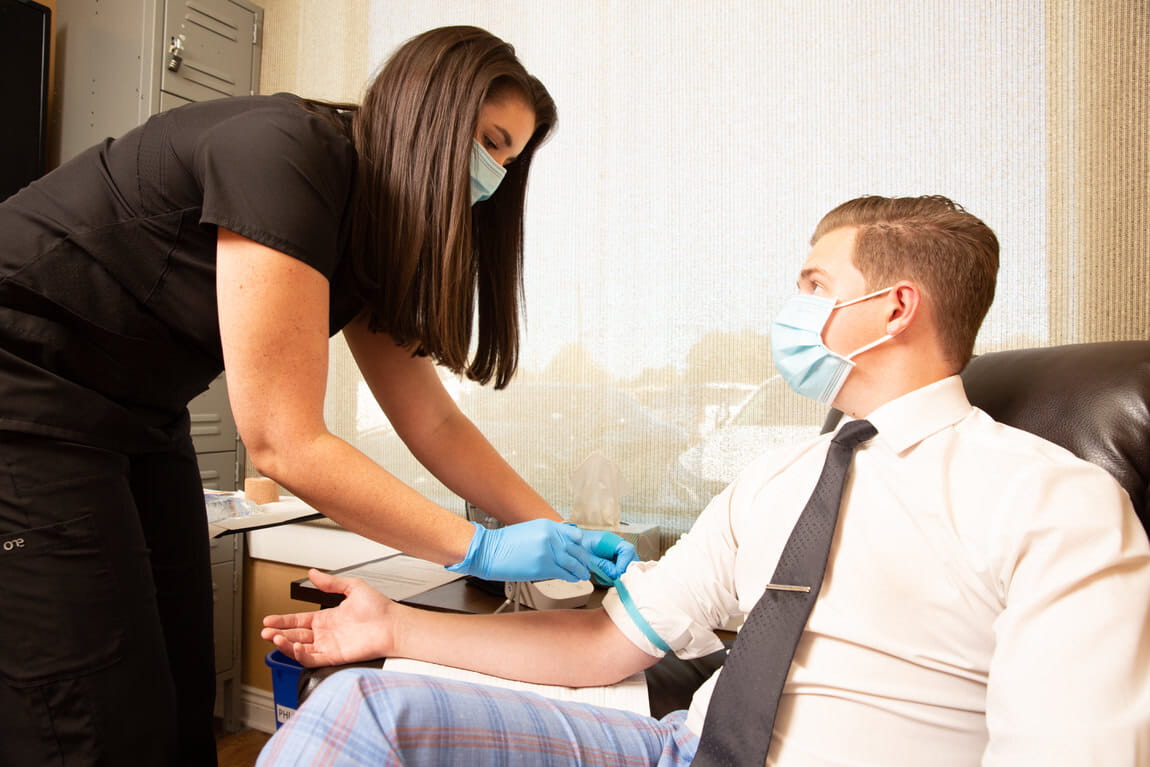Until recently, those who live with dermatomyositis (DM), have relied on off-label medications to treat this rare autoimmune disease of the muscles. On July 16, however, the Food and Drug Administration (FDA) approved an intravenous immune globulin (IVIG) therapy called Octagam10% for use by adults with DM.
“This is fantastic news for the myositis community,” says Dr. Rohit Aggarwal. “Octagam is the first proven FDA approved treatment for a myositis indication. We’ve had drugs in the past, but this is the first one that has the kind of scientific evidence—a Phase 3 clinical trial that is randomized, double blind, and placebo controlled—that is required for FDA approval.”
Dr. Aggarwal, an internationally recognized myositis expert, was the principal investigator for the Phase 3 clinical trial called ProDERM that demonstrated that Octagam 10% caused significant improvement in DM skin and muscle symptoms as well as other disease criteria.
Immune globulin is a concentrated solution of antibodies derived from donated human plasma. While immune globulin has been used to treat a variety of autoimmune diseases for more than 30 years, it’s use in myositis has been “off-label.” In fact, with a few grandfathered-in exceptions, all treatments for myositis diseases are used without an FDA labeled indication (approval) for this condition.
For a rare disease like myositis, however, it’s often difficult to convince a pharmaceutical company to invest in the research necessary to attain FDA approval. Fortunately, Octapharma, a privately owned pharma company based in Switzerland, chose to take that leap with Octagam.
“We are very responsive to patient and clinician requests,” says Eric Pluckhorn, US director of sales for Octapharma. “This now gives us an entree into the autoimmune market that up until now we really have not had for the Octagam brand.”
Several years ago when the company started this project, DM represented a huge unmet need. At the time, Dr. Aggarwal and his colleagues had recently developed response criteria that would provide the kind of measurable data needed to clearly demonstrate the drug’s benefit for patients. The success of the trial is good news for both DM patients and the providers who care for them.
For patients, off-label use often makes accessing the medication a challenge. IVIG is very effective, but it’s also very expensive. Health insurance companies, in an effort to cut costs, often don’t want to pay for such costly treatments. So they create roadblocks for patients, such as requiring them to first try a number of other treatments without success before they allow IVIG. This practice is called “step therapy.” If the drug is prescribed off-label, many companies simply refuse to pay for it.
Practitioners are also enthusiastic. “Empirically,we always knew IVIG works,” Dr. Aggarwal says, “but we were hesitant to give it, partly because of not having Phase 3 clinical trial-level of evidence and partly due to the insurance issues. Now we have an approved drug that we can give to the patients, and insurance companies can no longer deny it because it’s off-label.”
Perhaps more importantly, Dr. Aggarwal suggests this approval sets a precedent for future drug development in myositis.
“Once you have a drug approved through the FDA based on a rigorous process and a valid set of criteria, other drug companies will look at that as a pathway for novel drug clinical trials in myositis,” he says. “The ProDERM study sets a precedence for future drug approval in myositis.”
Within the next five to ten years, Dr. Aggarwal predicts there will be a number of novel therapies approved for myositis diseases, including not only dermatomyositis, but also polymyositis and necrotizing myopathy.
To address the other side of the access equation—that is, the expense—Octapharma plans to offer financial assistance to help cover the cost of the treatment. Eligible patients with commercial health insurance will have access to the company’s Copay Assistance Program that will cover out-of-pocket costs, such as coinsurance, copay expenses, and deductibles, up to $2,500 per year. This assistance is provided without regard for ability to pay. (By law in the US, the company is not able to offer this coverage to those who have government plans such as Medicare, Medicaid, or Tricare.) Patients who don’t have insurance or have lost their insurance may also get assistance through a compassionate use program.
“The FDA approval of Octagam 10% as a safe, tolerable and efficacious treatment for dermatomyositis in adults is exciting news for patients who previously relied on unapproved treatments,” said Octapharma USA President Flemming Nielsen. “Octapharma is committed to providing life-saving and life-enhancing therapies for patients with rare diseases. We look forward to partnering with patient organizations and the medical community to develop educational and other support programs that will serve dermatomyositis patients.”

